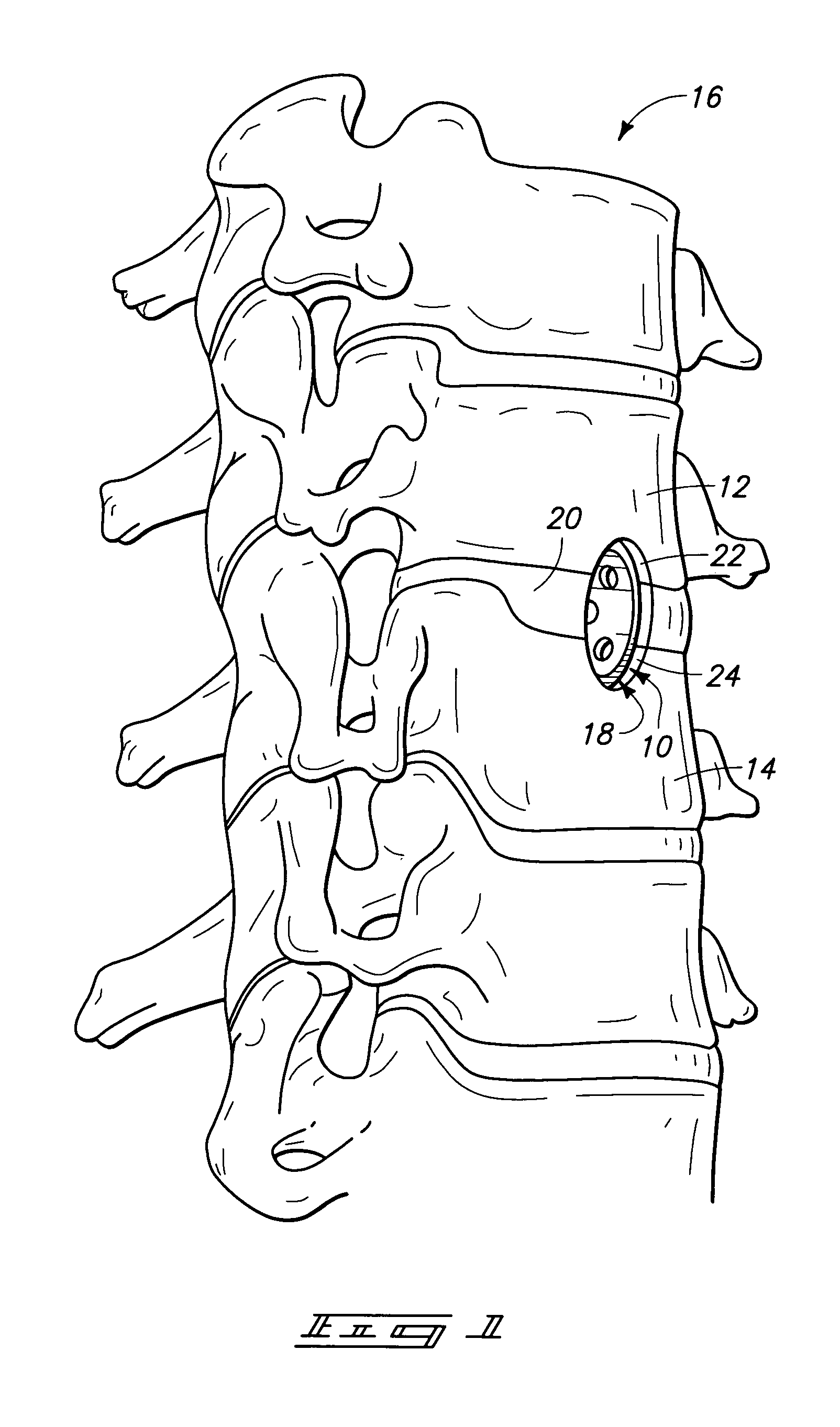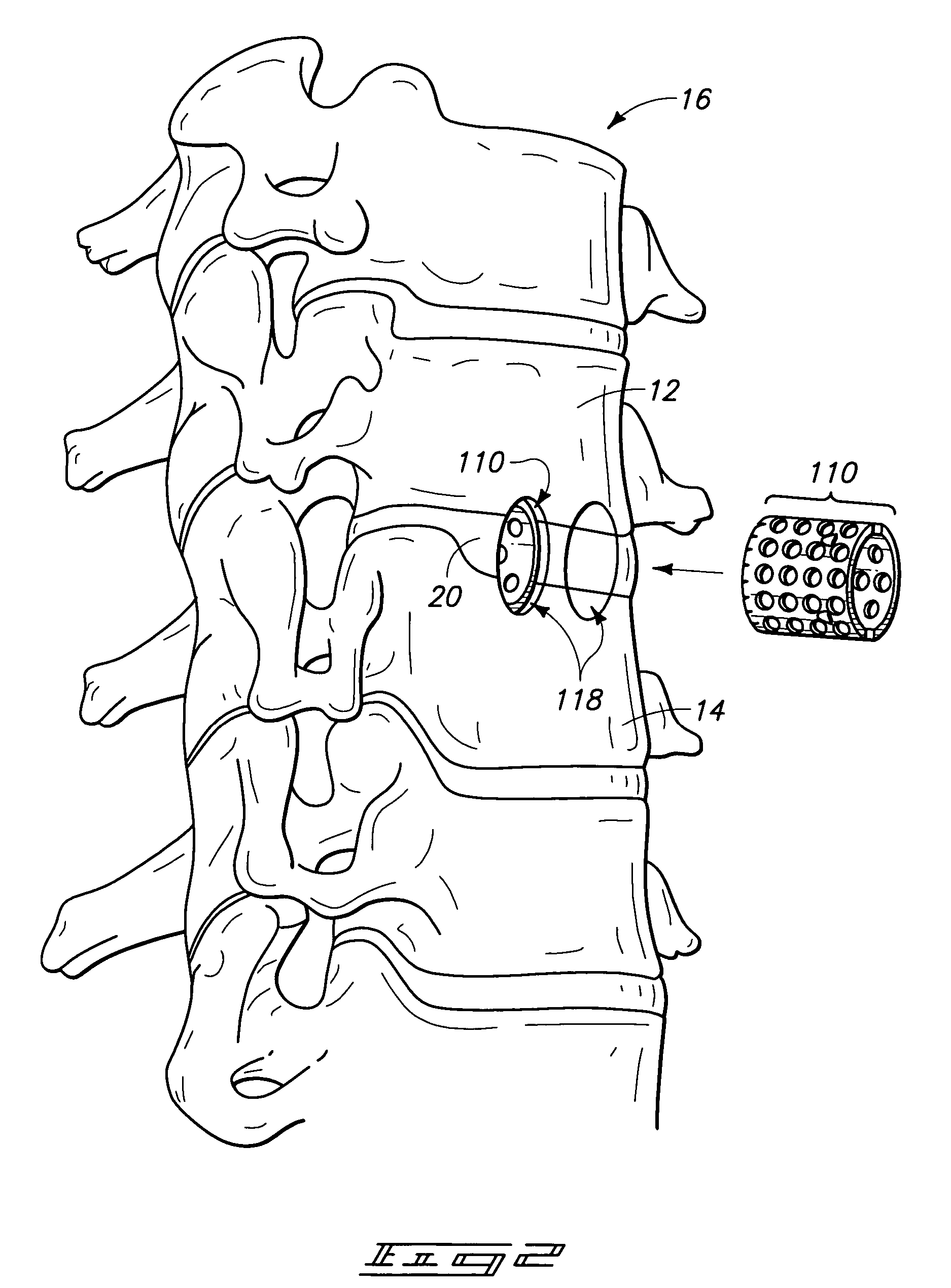Apparatus and method for preparing a spinal implant surgical site for receiving a spinal fusion implant
a spinal fusion and implant technology, applied in the field of surgical joining of bone bodies, can solve the problems of increasing costs, adding trauma to the procedure, and not being practical for certain joints, and achieves the effects of preventing lateral movement, enhancing frictional stabilization, and imparting a degree of lateral stabilization
- Summary
- Abstract
- Description
- Claims
- Application Information
AI Technical Summary
Benefits of technology
Problems solved by technology
Method used
Image
Examples
Embodiment Construction
[0051]This disclosure of the invention is submitted in furtherance of the constitutional purposes of the U.S. Patent Laws “to promote the progress of science and useful arts” (Article 1, Section 8).
[0052]A preferred embodiment bone joining implant in accordance with the invention is first described with reference to FIGS. 1, 12-18 and 21-25. Such an implant is described further below with respect to an open-ended vertebral interbody implant having instant fixation in the form of a leading open end and self-distraction features in the form of a cylindrical inner surface and an oblique outer surface. The fixating and self-distracting implant is designated in FIGS. 1, 12-18 and 21-25 generally with reference numeral 10. An alternative implementation comprising a pair of somewhat smaller sized implants 110 are depicted in FIG. 2. Yet another alternative implementation comprises a substantially cylindrical tubular implant 210 depicted in FIGS. 26 and 27.
[0053]As shown in FIGS. 1, 12-18 a...
PUM
 Login to View More
Login to View More Abstract
Description
Claims
Application Information
 Login to View More
Login to View More - R&D
- Intellectual Property
- Life Sciences
- Materials
- Tech Scout
- Unparalleled Data Quality
- Higher Quality Content
- 60% Fewer Hallucinations
Browse by: Latest US Patents, China's latest patents, Technical Efficacy Thesaurus, Application Domain, Technology Topic, Popular Technical Reports.
© 2025 PatSnap. All rights reserved.Legal|Privacy policy|Modern Slavery Act Transparency Statement|Sitemap|About US| Contact US: help@patsnap.com



